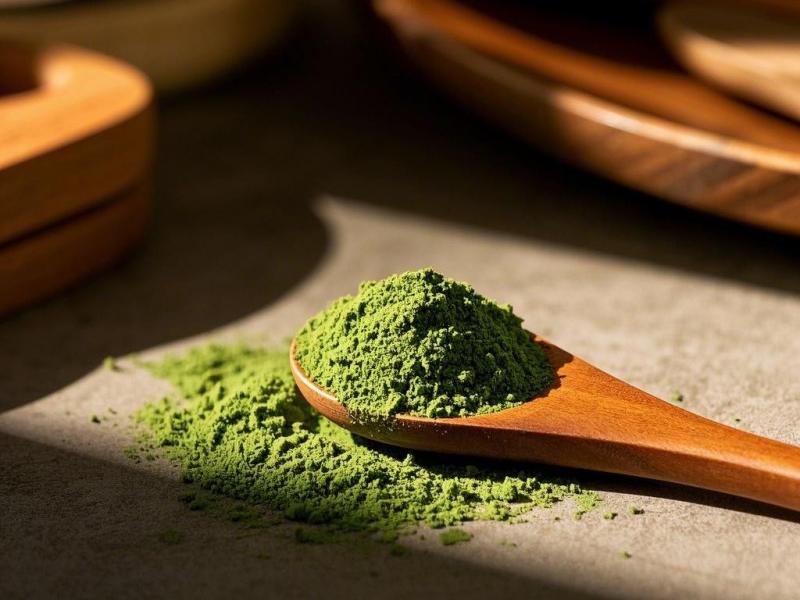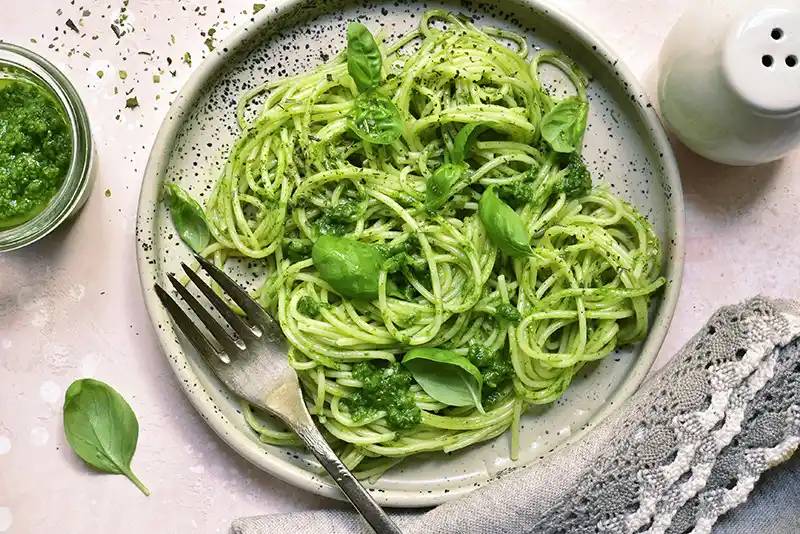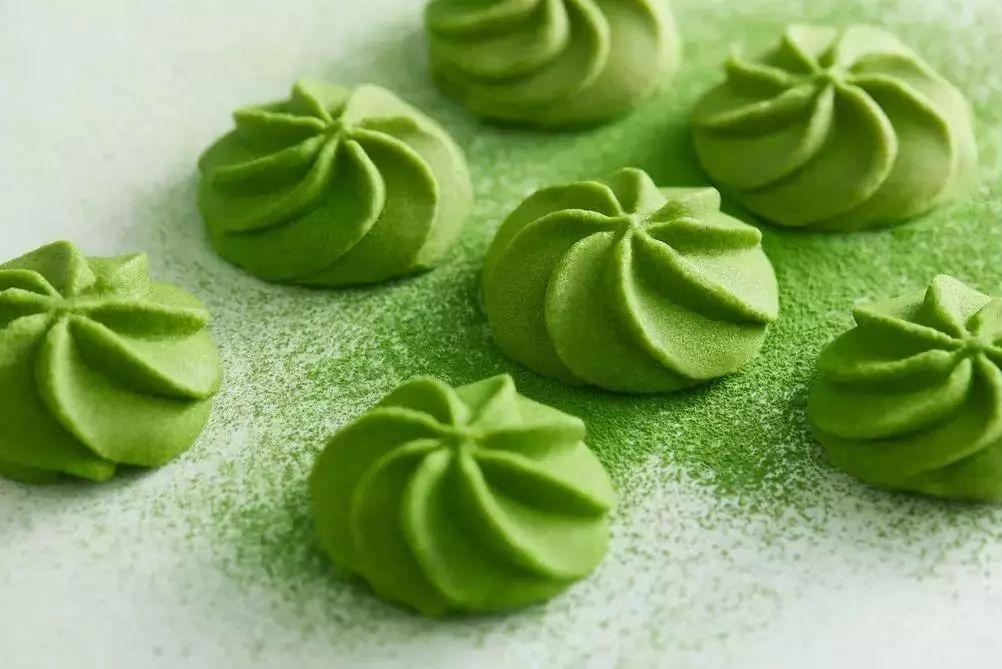What Is the Benefit of Spirulina in Gujarati?
Spirulina is the earliest primitive low-level plant on earth to use sunlight to convert organic matter. The inhabitants of Lake Chad in central Africa and the Aztecs of Lake Texcoco in Mexico have been consuming spirulina for hundreds of years. Since scientists discovered spirulina in Africa in the 1960s, it has been studied and developed in many countries and regions. Extensive nutritional analysis, toxicological tests and pharmacological studies have shown that spirulina in Gujarati is high in protein, nutrients and digestibility, and contains a variety of bioactive substances. It has been hailed as the “best nutritional source of the 21st century” by the FDA and the World Food Association. Spirulina can not only be used as a nutritional health food for the care of severely malnourished patients, the recovery of those who are weak after illness, and the nutritional care of children and the elderly, but also as an adjuvant drug for various diseases and for radiation resistance and cancer prevention, without any side effects [1-2].
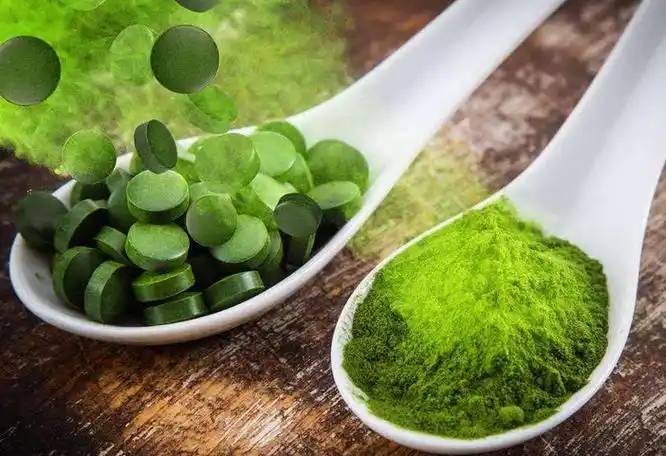
1. The physiological functions of spirulina
1.1 Immune regulation
Spirulina contains a water-soluble polysaccharide called spirulina polysaccharide, which has strong biological activity. Research on spirulina polysaccharide has focused mainly on its immune-enhancing properties. Chen Xinxia et al. studied the immune-modulating ability of spirulina on the body from the perspectives of cellular immunity, humoral immunity and mononuclear-macrophage phagocytic function. The results showed that spirulina can significantly enhance the cellular and humoral immune functions of mice, and the phagocytic function of mouse mononuclear-macrophages is also significantly enhanced. Another animal experiment showed that spirulina can enhance mouse antibodies and promote the phagocytic function of mouse macrophages and their ability to produce interleukin [3]. The mechanism of action of spirulina is related to its ability to enhance the proliferation of bone marrow cells and promote the growth of immune organs and the biosynthesis of serum proteins [4].
1.2 Anti-oxidation and anti-aging effects
Li Ling et al. [5] used the Fenton reaction and photochemical production of riboflavin to generate active free radicals OH and O2ˉ, and studied the ability of spirulina and its polysaccharides to remove OH and O2ˉ in vitro using spectrophotometry. and the protective effect of spirulina and spirulina polysaccharides against lipid peroxidation and DNA oxidative damage caused by OH was studied using the FeSO4-induced lipid peroxidation model and thiobarbituric acid spectrophotometry. The results showed that spirulina and its polysaccharides can effectively remove OH and O2ˉ free radicals and significantly inhibit lipid peroxidation and DNA oxidation damage caused by OH. The research results also show that spirulina polysaccharides are the main active ingredients in the antioxidant effect.
Aging of the body is mainly caused by the production of lipid peroxides in the body. Superoxide dismutase (SOD) is one of the main enzymes that scavenges free radicals. It catalyzes the disproportionation of the superoxide anion radical O2ˉ into oxygen and hydrogen peroxide in the body, and the latter is scavenged by the action of catalase and peroxidase. Spirulina contains a variety of enzymes, the most important of which is SOD. Spirulina is also rich in nutrients such as vitamin E, beta-carotene and selenium, which are all powerful antioxidants that can effectively remove free radicals in the body, inhibit lipid peroxidation and slow down the aging process.

1.3 Anti-radiation effect
Spirulina polysaccharides can increase the proliferation capacity of bone marrow cells and reduce radiation damage. Animal experiments have shown that the average survival time of mice fed spirulina is doubled compared to control mice. Wang Yanli's research also confirmed that spirulina polysaccharides can increase the survival rate of irradiated mice and effectively increase the relative number of hematopoietic stem cells. Spirulina can promote the proliferation and differentiation of hematopoietic stem cells, improve the radiation tolerance of mice, and promote the recovery of the hematopoietic system after radiation damage [6].
Tan Shenghua et al. [7] evaluated the anti-radiation effect of natural spirulina powder on mice. 40 mice were used as the anti-radiation group I, and the white blood cells were observed dynamically; 40 mice were used as the anti-radiation group II, and the bone marrow cell micronucleus test was performed; and another 40 mice were used as the anti-radiation group III, and the erythrocyte SOD activity test was performed. The results showed that natural spirulina powder significantly increased the white blood cell count, decreased the micronucleus rate of bone marrow cells, and increased the SOD activity of red blood cells in mice after a single high-dose 60Co-γ radiation.
1.4 Antitumor effect
Spirulina polysaccharides have a significant inhibitory effect on breast cancer cells and leukemia cells, and also have the effect of significantly increasing the thymus index and spleen index of tumor-bearing mice. Schwartz injected or applied spirulina extract locally to the oral mucosal cancerous lesions induced by DMABA in mice, and the number and appearance of the cancerous lesions were significantly reduced and degenerated, or even completely disappeared. In a study by Ding Shouyi and others on the effect of spirulina polysaccharides on the in vitro growth of human cervical cancer Hela cells, it was found that as the concentration of spirulina polysaccharides increased and the culture time lengthened, the cell survival rate gradually decreased and the inhibition rate gradually increased.
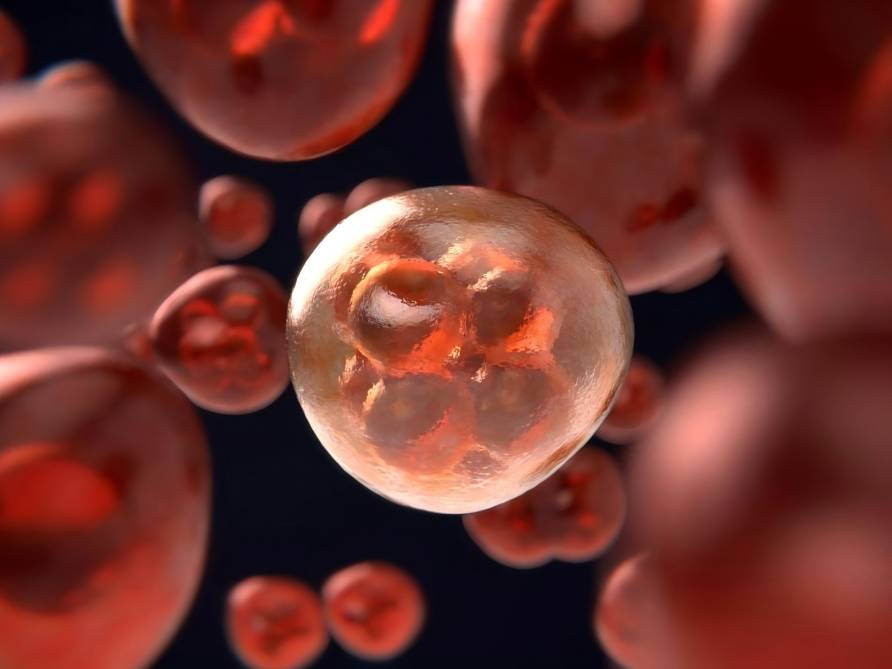
1.5 Anemia prevention
Spirulina can effectively enhance anaerobic fermentation and aerobic metabolism, producing more ATP to meet the needs of normal transmembrane ion concentration gradients and maintain cell stability. It can promote iron absorption, increase plasma ferritin, effectively correct anemia, and protect against blood cell regeneration dysfunction. It can improve hematopoietic repair function and immune function [8].
Spirulina contains 190–550 mg/kg of iron, which is present in the form of ferritin and is easily digested and absorbed. Regular consumption can effectively prevent and treat iron deficiency anemia. In addition, the rich chlorophyll in spirulina ensures the effective absorption of iron. The body quickly converts chlorophyll into heme after ingestion, which improves blood circulation and is beneficial for the treatment of heart disease, hypertension, and cardiovascular system diseases.
1.6 Hypoglycemic effect
Spirulina polysaccharides of different concentrations (100 mg/kg and 200 mg/kg) were continuously administered to Kunming mice by gavage for 10 days. It was found that the blood glucose of normal mice did not change significantly, while the high blood glucose of mice with streptozotocin-induced diabetes was significantly reduced. The reduction rates of the two concentrations were 23.6% and 30.1%, respectively, and the difference was very significant. In addition, spirulina polysaccharides in the same dose can also significantly counteract the increase in blood glucose in mice caused by adrenaline and glucose [8]. This shows that the nutritional composition of spirulina not only meets the dietary requirements of diabetic patients (i.e., low sugar, low fat, high protein, and high vitamins), but also has a more obvious therapeutic effect on diabetes.
1.7 Anti-fatigue effect
Ji Lijuan [9] used a control feeding test with conventional mouse feed and spirulina feed to observe the time to exhaustion of swimming in mice and the content of LPO in skeletal muscle, and measured the serum biochemical indicators (BG, LD, SOD, MDA) of mice when swimming until exhaustion. The results showed that the swimming exhaustion time of mice fed spirulina was significantly prolonged, and the LPO content was significantly reduced. After exhausting exercise, the increase in serum lactate and malondialdehyde in mice was significantly reduced, and SOD activity was significantly increased. It can therefore be concluded that the bioactive ingredients in spirulina in Gujarati can scavenge free radicals in the body, relieve or eliminate damage to muscle cell membranes caused by free radicals, and have the effect of combating exercise-induced fatigue. Spirulina can also provide the body with glycogen, enhance exercise endurance and prolong exercise duration.
1.8 Other physiological functions
The unsaturated fatty acids in spirulina help with fat metabolism. They can form cholesterol esters with dietary cholesterol that are easily mobile and transportable in the body, reducing the deposition of cholesterol on the inner membrane of blood vessels. They can also promote the conversion of cholesterol into choline, thereby preventing cardiovascular disease in the elderly. The sulfated polysaccharides isolated from spirulina have anti-HIV-1 and anti-HSV-1 virus effects. Spirulina polysaccharides can significantly reduce the increase in gastric ulcer index, increase serum NO levels and plasma PGE levels. In addition, spirulina can also promote the growth of beneficial bacteria such as lactobacilli and improve the absorption capacity of the digestive tract [10].
2 Application of spirulina in food
2.1 Application in beer
There are three ways to add spirulina to beer production: adding it during boiling, adding it during the wort cooling process, and adding it to the clear brew. The amount of spirulina added is: yeast beer 0.4% to 0.5%, and filtered beer 0.2% to 0.3%. Spirulina-added beer is a bright green color, clear and transparent, with a luster, no obvious suspended matter or sediment; the foam is white and delicate, and it holds its head well; it has a hoppy aroma, no off-flavors; the taste is fresh and pure, soft and refreshing, with astringent properties and no strange aftertaste.
Hu Penggang et al. [11] studied the production process conditions for spirulina green beer. The results showed that the optimal spirulina liquid addition was 160 mg/L; the first stage of saccharification was 65 °C for 30 minutes; the second stage of saccharification was 72 °C for 30 minutes; and the spirulina was added to the filtered sake. Beer produced using this process is green and clear, transparent, with abundant, fine and persistent foam, and a characteristic spirulina aroma.
2.2 Application in beverages
Huang Shen is a precious natural wild plant that is rich in nutrients and contains Huang Shen saponins, polysaccharides and a variety of essential amino acids and trace elements. It has high edible and medicinal value and is deeply loved by the people [12].
Chen Tianren et al. [13] based on relevant research, extracted and enzymatically digested astragalus and spirulina, and made a compound health drink with a pure and fresh taste and a moderate sweetness and sourness according to a certain process formula, so that the effective components of the two complement each other, which can not only quench thirst in the summer, but also have health-care functions.
Wang Hong et al. [14] added spirulina to lactic acid drink to make spirulina lactic acid drink. On the one hand, it can significantly improve the single fermented milk flavor of the lactic acid bacteria drink, giving it a rich aroma and fragrance; on the other hand, the lactic acid bacteria drink is enriched with protein and a variety of active ingredients, and its nutritional and health-care functions are greatly improved. Adding 0.25% guar gum to the mixture can effectively prevent the particles of spirulina lactic acid bacteria drink from settling, making the yogurt structure uniform and the consistency appropriate.
2.3 Application in yogurt
The protein in spirulina is composed of 18 amino acids, with a content of up to 60%, which is 3.6 times that of high-protein meats and fish. However, its fat content is only 5%, which is much lower than other high-protein foods, and it does not contain cholesterol. When making yogurt, adding spirulina powder and soy protein powder to the raw milk can increase the content of nutrients such as protein. At the same time, the cholesterol content can be reduced by reducing the amount of raw materials used. The spirulina yogurt drink made through double-strain fermentation has a nutritional balance of animal and plant proteins, and is a low-fat, high-protein, nutrient-rich health food [15].
Although spirulina is extremely nutritious, it has a strong fishy smell and tends to fade easily. If it is used directly to make yogurt, the drink will not taste good. Zhang Yijiang et al. [16] used masking and adsorption methods to deodorize spirulina. The optimal deodorization process was determined: the deodorization was carried out by mixing citric acid and β-cyclodextrin, of which the addition amount of β-cyclodextrin was 0.5% and the addition amount of citric acid was 0.15%. Using milk as the main raw material, adding spirulina flesh and other ingredients that have been deodorized, using bifidobacteria as the fermenting agent, and using white sugar as the flavoring agent, the product obtained by fermentation not only increases the variety of yogurt, but also improves its nutritional and health benefits.
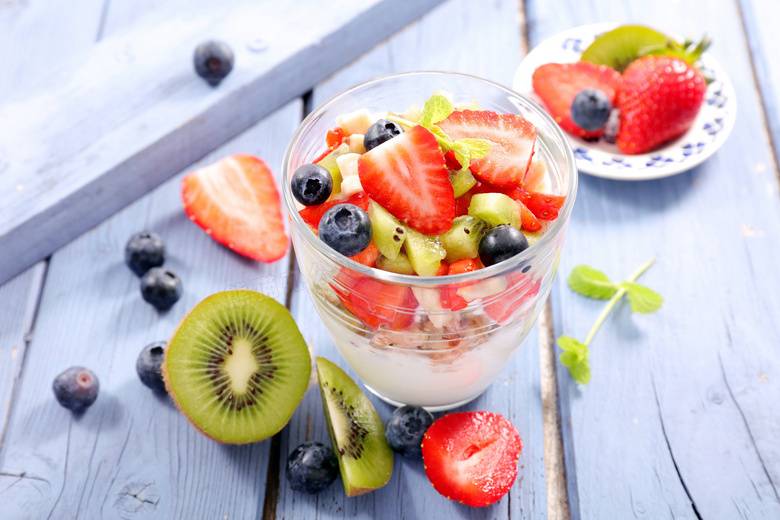
2.4 Application in soy sauce
Li Cili et al. [17] used a spirulina concentrate extract to completely release its cell proteins and contents, and to participate in the entire fermentation process of soy sauce. This allowed the nutrients in spirulina to be broken down by esters secreted by Aspergillus oryzae; the proteins to be broken down into polypeptides and amino acids; and other substances to be converted into bioactive substances such as various vitamins, unsaturated fats, minerals, and polysaccharides. Spirulina soy sauce produced in this way has an increased content of various nutrients, especially β-carotene, γ-linolenic acid, small molecular polysaccharides and other ingredients, and the umami flavour of the soy sauce is greatly enhanced, giving it a mellow taste.
Studies have shown that the amount of spirulina concentrate added is important for the fermentation of solid soy sauce and can increase the fermentation rate of soy sauce. The production process of spirulina soy sauce is simple, and by adjusting the amount of spirulina added, soy sauce with different nutritional qualities can be produced.
2.5 Application in ice cream
Chen T. et al. [18] added spirulina to ice cream, which on the one hand improved the nutritional and health benefits of the ice cream, and on the other hand improved the technological properties. Spirulina is rich in chlorophyll, which is not heat-resistant and not acid-resistant. When exposed to high temperatures (above 90 °C), the color turns yellow. Under acidic conditions, chlorophyll is converted to pheophytin, and the color turns greenish brown or yellow. Since ice cream is a frozen food, and the addition of spirulina is after the sterilization process, and the acidity is controlled within an appropriate range, the nutrients and color of the spirulina are completely preserved. Spirulina gives the product a pure natural green color, and makes the product fine and smooth, with a light spirulina flavor that complements the cream and flavor.
2.6 Application in jelly
Spirulina contains a variety of physiologically active substances, such as phycocyanin, active polysaccharides, γ-linolenic acid, β-carotene, vitamins, chlorophyll, etc., which are nutrients that promote children's growth and development. Adding it to jelly can promote children's growth and development.
When the amount of spirulina powder added is 0.05% to 0.10%, the resulting spirulina jelly has a uniform color, moderate sweetness and sourness, no peculiar smell, moderate softness, elasticity, and a delicate and uniform texture. It is a transparent gel with a relatively intact shape in the packaging container, and there are no obvious flocculent substances. It is a new type of jelly with market consumption potential [19]. After being stored for a month, the jelly still has a stable color, a moderate aroma, and a sweet and sour taste.
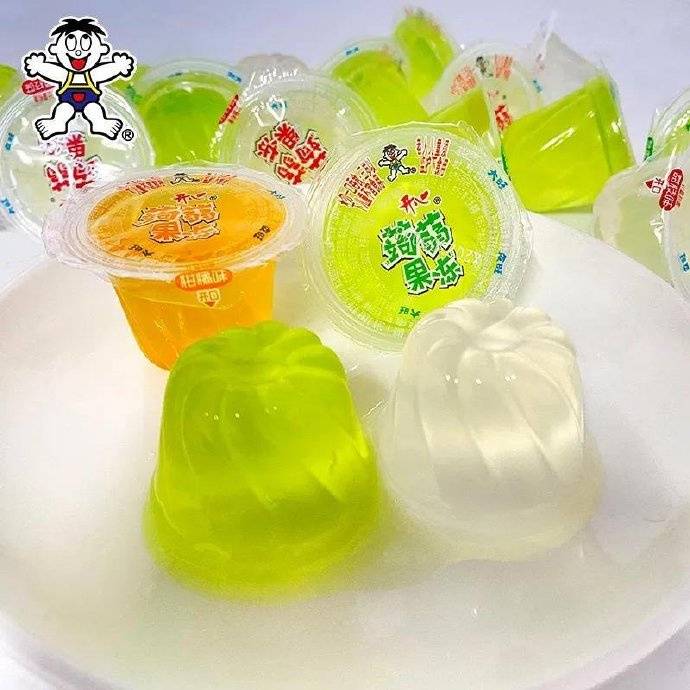
2.7 Application in chocolate
Adding substances such as spirulina dry powder to chocolate liquid can make spirulina chocolate with a more balanced nutrition. Zhang Tiehua et al. [20] ground and refined the dried spirulina powder when making the chocolate. During the mechanical extrusion and friction process, most of the particles were restricted below an average fineness threshold, and the phycocyanin was evenly dispersed in the base material, which had little effect on the overall structure, texture and color of the chocolate. At the same time, the fishy smell of the spirulina was masked, and the flavor was more novel.
Lu Yuxia et al. [21] used a combination of honey blending, the Maillard reaction and chocolate masking to improve the flavor of nutrient-rich but fishy spirulina in the development of spirulina chocolate jelly. Spirulina and chocolate were then made into two shapes: lumps and granules, and added to the jelly to produce spirulina chocolate jelly with a unique flavor and balanced nutrition.
2.8 Application in noodles
Spirulina is an excellent functional food resource due to its excellent nutritional properties, and spirulina noodles are another product in the food industry.
Wang Hong et al. [22] added dried spirulina powder to flour to make noodles with balanced nutrition and health-promoting functions. Experiments have shown that the nutritional value and sensory score of spirulina noodles are higher than those of ordinary noodles.
Yang Shenghui et al. [23] used high-quality flour and spirulina powder as the main raw materials, fortified with the trace element zinc, to make spirulina-fortified nutrition and health care noodles. The nutrition noodles have a blue-green appearance, giving a feeling of freshness, health and fashion, which is pleasant and enhances appetite. At the same time, they have a very light algae smell, are resistant to cooking, have a bite, a smooth texture and are of excellent quality.
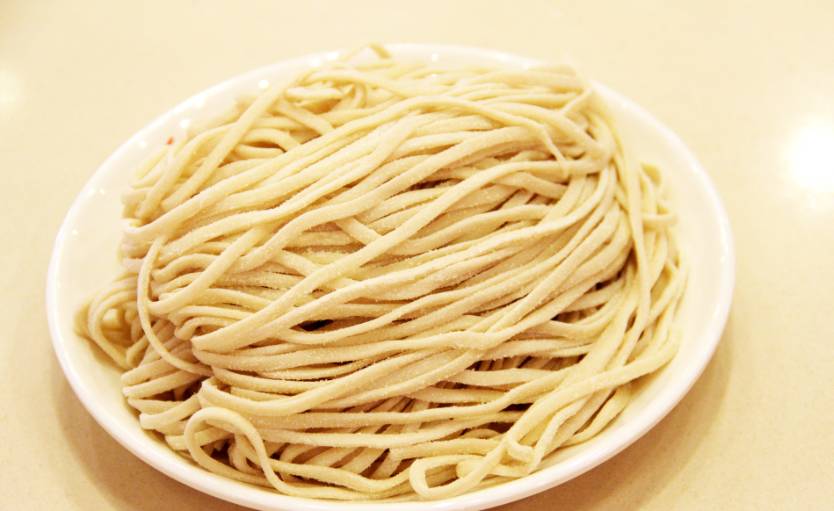
3 Outlook
Spirulina, as a new plant protein resource, has attracted the attention of many countries and set off a development boom. At present, the development and utilization of spirulina at home and abroad is mainly concentrated in the four fields of nutritional foods, health care drugs, cosmetics and rare animal feed. With people's gradually strengthening nutritional awareness and the development of medical science, in the near future, mass green health foods made from spirulina will continue to appear. The latest research progress at home and abroad shows that spirulina is rich in various nutrients, and its nutrient composition is very close to the nutritional needs of animal bodies. It is a high-quality source of green feed. Therefore, in addition to its huge potential in nutritional foods, spirulina also has attractive development prospects in functional foods and feed and additives.
References
[1] Chen Xinya, Shi Genyong, Lv Zhongming, et al. Research on the immunomodulatory effect of spirulina on the body [J]. Jiangsu Preventive Medicine, 2000, 11(1): 70-71.
[2] Ren Yongxin, Cui Jinmei. Health food spirulina and beer brewing [J]. Brewing Science and Technology, 2004(5): 89-90.
[3] Eich, H. Supplying spirulina to mice to enhance antibody production [J]. Journal of Nutrition Science and Vitaminology, 1994, 40(5): 11.
[4] Sun J, Lu S, Tao N. Nutritional value and health-promoting function of spirulina [J]. China Fisheries, 2006(5): 76-77.
[5] Li Ling, Gao Yuntao, Dai Yun, et al. Research on the in vitro scavenging of active oxygen and antioxidant effects of spirulina and spirulina polysaccharides [J]. Chemical and Biological Engineering, 2007, 24 (3): 55-57.
[6] Hou Jianshe, Xue Fengzhao, Mo Wengui, et al. The main physiological regulatory functions of spirulina [J]. Food Research and Development, 2001, 22(1): 31-34.
[7] Zuo Shaoyuan, Qian Jinbiao, Wan Shunkang. Experimental study on the hypoglycemic activity of spirulina polysaccharides [J]. Shizhen Traditional Chinese Medicine, 2000, 11(8): 677-678.
[8] Su Dalong. Research progress on spirulina [J]. Heilongjiang Traditional Chinese Medicine, 2006 (3): 44-46.
[9] Ji Lijuan. Research on the anti-fatigue effect of spirulina on exhausted mice [J]. Examination Weekly, 2008 (27): 237-238.
[10] Pang Hui, Tang Guifang, Yu Yanhong. Anti-ulcer effect and mechanism of spirulina polysaccharide [J]. Guangxi Medical Journal, 2006, 28(11): 1772-1773.
[11] Hu Penggang, Liu Qiang. Development of spirulina green beer [J]. Brewing Science and Technology, 2004(5): 113-114.
[12] Chen Ye, Chen Tianren, Luo Guanghong. Research on nutritional value and processing technology of yellow ginseng [J]. Food Science and Technology, 2003 (11): 96-97.
[13] Chen Tianren, Luo Guanghong, Zu Tingxun, et al. Research on the preparation process of a health drink containing yellow ginseng and spirulina [J]. Food Science, 2004 (11): 121-123.
[14] Wang Hong, Deng Junjie. Development of spirulina lactic acid bacteria fermented beverage [J]. Food and Fermentation Industry, 2007, 33 (4): 162-164.
[15] Niu Deqiang, Mao Shuxia. Processing technology of Spirulina platensis nutritional yogurt [J]. Shandong Food Science and Technology, 2003 (8): 9-10.
[16] Zhang Yijiang, Jia Changhong, Zhang Xiaole, et al. Process research on bifidobacterium spirulina acidophilus [J]. Food Research and Development, 2006, 27 (10): 89-91.
[17] Li Cili, Duan Shanhai, Zhao Kai, et al. Development of spirulina soy sauce [J]. Food Machinery, 2001 (4): 32-34.
[18] Chen T. Research on the production process of spirulina ice cream [J]. China Dairy Industry, 2003(2): 35-36.
[19] Chen X. Development of spirulina jelly [J]. Sichuan Food and Fermentation, 2000(12): 50-52.
[20] Zhang Tiehua, Liu Jingbo, Yang Mingdao. Development of spirulina chocolate [J]. Food Industry Science and Technology, 2004 (1): 96-97.
[21] Lu Yuxia, Zhong Guangquan, Ye Qiongxing, et al. Development of spirulina chocolate jelly [J]. Food Industry Science and Technology, 2006, 27 (1): 137-139.
[22] Wang Hong, He Qiuju. Development of spirulina health noodles [J]. Cereals, Oils and Foodstuffs Science and Technology, 2007 (1): 50-52.
[23] Yang Shenghui, Chen Yu. Research on the production process of fortified spirulina noodles [J]. Journal of Gansu University of Technology, 2003, 29 (3): 71-73.


 English
English French
French Spanish
Spanish Russian
Russian Korean
Korean Japanese
Japanese
